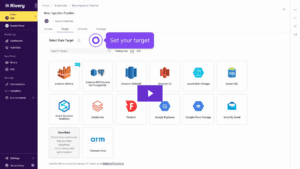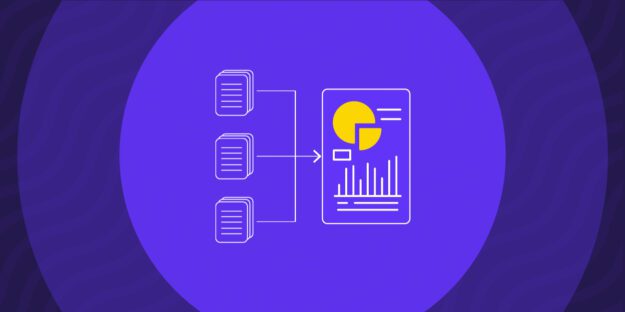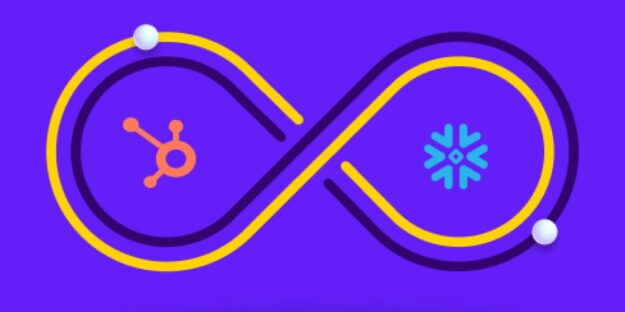In this guide, we will discuss what is data ingestion, its benefits and challenges, and the best data ingestion tools.
If you ever need to prepare a report or analysis for your work, you will find that there is quite a lot of data to go over before you wrap up the final document. The data would often come from various sources and in different formats, so it is not always that straightforward to analyze or even gather the data in the first place.
Instead of finding information and storing it yourself in a data warehouse, you can use data ingestion tools to help. There are many types of ingestion tools with various features you can implement into your business to create more accurate, up-to-date, well-organized reports.
What Is Data Ingestion?
Data ingestion is the procedure of collecting data from many sources and loading it into a target site, such as a cloud data warehouse. Any staff member in your organization can access the warehouse and utilize the data for insightful reports and research files.
Data ingestion in big data is also the first step in creating data pipelines used for analytics, where you collect, transform, and load for insights. This involves the initial transfer of data and ongoing updates to ensure the data is current and accurate.
In addition, understanding the data ingestion process flow is crucial because it enables real-time or near-real-time data processing, supports machine learning and AI applications, and drives informed decision-making across the organization.
Regarding data ingestion methods, the two standard ones you can come across are batch and real-time data ingestion. However, micro-batching is another method that has become popular recently. Here is the exact meaning behind these data ingestion methods:
- Batch data processing – The data is imported in batches at a regular schedule or interval. For example, a company can have batch data ingestion once per day, enough for their daily reports to be created.
- Real-time data processing – The data is imported as it is created or emitted by the source. That means data could be added to the warehouse constantly and streamed as the company or customer needs.
- Micro batching – The data is imported in small batches, which are more frequent than the batches from the regular batch data processing method. This is the processing method used by most streaming systems.
Types of Data Ingestion
There are three main types of data ingestion methods, each serving specific needs in data processing and analytics pipelines:
Batch Data Processing
Batch data processing collects data and processes it in batches at scheduled intervals. It’s the most common type of data ingestion; it’s helpful when you don’t require real-time access to data or solely need specific data points daily.
A retail company, for example, might process sales data in batches nightly to update inventory and sales reports.
Streaming Data Ingestion
Real-time data processing collects and transfers data from source systems as it occurs. That’s essential for time-sensitive use cases like stock market trading or power grid monitoring.
For instance, a financial trading platform must process transaction data in real-time to provide up-to-date market information.
Lambda Architecture
Lambda architecture mixes batch and real-time data ingestion. It enables organizations to process data both in real-time and in batches, delivering a comprehensive approach to data management.
This method is beneficial when you require immediate insights alongside long-term trend analysis.
An example could be an online streaming service using real-time data to recommend content to users while analyzing viewing patterns.
Benefits
Every business can benefit from data ingestion as all the data they gather will ultimately help them understand the market, their customers, what type of products they need to create, how to improve their company, etc. Below are a 5 most common benefits you can get if you start using data ingestion.
Data Availability
Data ingestion stops data silos and allows a more holistic view of organizational data. Data ingestion also ensures all relevant data is readily available for analysis and decision-making by integrating data from various sources into a centralized repository,
For example, your company can combine sales, marketing, and customer service data to get a complete picture of customer behavior.
Data Insights
Reliable data ingestion offers better decision-making. It provides accurate and up-to-date data, helping you gain valuable insights, identify trends, and make informed decisions.
For instance, if you have an e-commerce company—you can analyze customer purchase patterns to optimize its inventory and marketing strategies.
Automated Data Transfer
Instead of transferring data gathered from other companies or reports yourself, you can use a data ingestion tool to extract, transfer, and store the information. That means you will have much more time to finish other, more important tasks or focus on different aspects of your business to improve it further.
Extraction Value From Data
When looking at data from other companies or your own business, data ingestion can help you extract valuable information you can use to improve the business further. This data can help you gain insight into how successful companies work or how you can use gaps in the market to your advantage.
Data Uniformity
No matter what kind of data you give the data ingestion tool, it can extract the needed information and create a unified dataset that you can use for all your future requirements— reports, analytics, or business intelligence.
Challenges
As many advantages as data ingestion has, a few challenges may arise when you try to include data ingestion into your business. Following, we’ve detailed some of the challenges you should keep in mind.
Maintaining Data Quality
Maintaining data quality is often challenging, especially when you have a significant amount of data. Sometimes, it can get damaged in the process of extraction or transformation. That is why it’s recommended you perform a data quality check regularly.
Syncing Data From Multiple Sources
Some difficulties may arise if you try to extract data from too many sources simultaneously. For example, the process might take longer to complete, or some data quality might be compromised. You must be extremely careful when trying to sync data from multiple sources simultaneously.
Streaming Data Ingestion
When dealing with real-time data processing, you must realize that a lot of information is going into the tool and waiting to be processed. The sheer amount of data might make the process difficult for the tool and cause quality problems or slow ingestion. You will either have to limit the number of sources you use or try a better tool to deal with such data.
Data Ingestion Best Practices
Businesses must have accurate, up-to-date information to base their decisions, and data ingestion tools or features are perfect for that. Below are some best practices we recommend when dealing with data ingestion.
Implement Alerts at the Source for Data Issues
One of the best things to do is implement issue alerts at the source so that you can catch all problems early and keep them from causing more significant challenges. Remember that you can set alerts at various points, not just at the beginning.
You can set several types of data alerts, including alerts for quality, security, and availability issues. Quality alerts can tell you if there are any issues with the data quality, meaning if it is incorrect or invalid for any given reason. Security alerts can alert you to security breaches, whereas availability alerts can tell you if the data can be reached or if there are some transmission issues.
This practice aims to set at least some kind of alert to avoid having issues with your data and to keep the faulty data from compromising the quality of the rest of the batch.
Make a Copy of All Raw Data
Sometimes, obtaining some data can be difficult, time-consuming, or even expensive. Even if you can get the data relatively quickly and easily, you should still be careful how you use it so you don’t need to extract it again.
That is why making copies of all your raw data is important. You can use it for future references or in case some issues arise during the transformation process.
Implement Automation for Data Ingestion
As mentioned above, you should not spend time collecting data but rather implement automation and let it gather all the needed data. That is what data ingestion tools or applications are there for.
They usually come with a few simple features that do all the work. Some of these features include the following:
- Data connections connect the application with the source documents or reports.
- Optical Character Recognition, or OCR, is essential to extract information from various documents.
- Data wrangling will clean and format the data, transforming it into raw data you can use for any purpose.
- Data validation is a good feature if you want to check whether the collected data is accurate and up to date.
- Data processing can help you move all the exported data from the data ingestion pipeline into any storage you like, whether a data warehouse, data lake, or something else.
Make Use of AI
Artificial intelligence has been on the rise lately, finding its place in various fields, including data ingestion. You should try using AI for data ingestion to ensure the data is accurate, safe, and up-to-date. There are AI algorithms that can quickly detect issues in any kind of data, which means you can easily tell if the data collected has any faults.
As many uses as AI can have, it’s best to use it initially for language processing and image recognition. You can also use it for machine learning to see if it helps with data ingestion. Of course, pairing it with some helpful ingestion tools can bring even better benefits.
Data Ingestion Tools and Features
As we mentioned, data ingestion tools are used to facilitate the collection and transfer of data to a target system. In most cases, the source system will have a different way of processing and storing the data, which is why choosing a good data ingestion tool is crucial.
Data Ingestion Tools Types
If you look up data ingestion tools, you will find that quite a few are currently available online. From Rivery to Hevo, Apache, Talend, and others, these tools can be divided into four main types:
- Hand Coding – This is a type of tool that requires a person to write the code that would help ingest the data. This practice can be time-consuming and require coding knowledge, so it might not be the best option for everyone.
- Single Purpose Tool – This type of tool does not require coding but allows you to use a simple interface with pre-build options to make data ingestion easier. These tools usually involve dragging and dropping.
- Data Integration Platform – This type of tool often needs specific integration into a domain, so you might need the help of developers to integrate the platform on your site. These tools are a bit more challenging to use and are also known to be expensive.
- DataOps Approach – It’s a type of tool that helps automate much of the process, but there is still the need for an engineer to overlook the work of the tool. Like data integration platforms, they are not as convenient as single-purpose tools.
Data Ingestion Features
After you select your preferred type of data ingestion tool, you should look into its features to ensure it comes with everything you need to collect the necessary data.
As we’ve mentioned, data ingestion involves data extraction, processing, and transformation—three essential features your tool must have.
Additionally, there are a few other features you can benefit from, such as the following:
- Security – You want the extracted data to be safe and secure, so ensure your tool has some protective protocol encryption.
- Volume – It is also essential to ensure the tool is scalable, meaning it can deal with larger volumes of information without causing significant issues.
- Data flow tracking – This feature lets you see how the data flows through the system.
Various data ingestion tools come with different features. Which features you get depends on your chosen tool.
What Are the Challenges of Data Ingestion and Big Data Sets?
We already mentioned some data ingestion challenges, including maintaining data quality, syncing data from multiple sources, and streaming ingestion. While these are common data ingestion challenges, there are a few others you should also be aware of.
For example, time efficiency can be a problem that arises if you choose data ingestion tools with hand coding. Then, limited-volume tools can cause problems with the volume of data you want to process. Furthermore, you could deal with data loss, duplicate data, and other similar issues.
If you encounter any such issue, you must try and eliminate it as soon as possible. Here are three things you should try if you want to remove all possibility of data ingestion problems:
- First, use a fully automated data ingestion tool that eliminates the possibility of human error since the tool itself will do the work for you. However, remember not to go for the first tool you come across. Research many tools thoroughly and go for a trusted, well-established tool with many satisfied customers, such as Rivery.
- Second, implement data SLAs to help you learn more about what your customers expect from your business, what they think you can improve, etc.
- Third, do quality checks often to ensure the data collected has no issues. As mentioned above, you can implement alerts at the source to get notified as soon as the tool detects some problem.
Incorporating these three steps into your routine while using the best data ingestion tools will eliminate all challenges and create an environment that sets you up for success.
Data Ingestion vs. ETL
When looking into data ingestion, you will inevitably encounter the term ETL. While it refers to something fairly similar to data ingestion, it is not entirely the same. Namely, the most significant difference between the two is the goal. Here is how we would define them:
- Data ingestion is the process of collecting data from multiple sources and storing it in data warehouses. You can use the data whenever needed while importing it in real-time or in batches. You can choose whether to transform the data immediately after loading, at a point in the future, or not transform it at all.
- ETL refers to extraction, transformation, and loading. That means that the data goes through the transformation before being stored. The data is usually prepared for long-term storage; you can import it only in batches and on a regular schedule, meaning that there is no option to import it in real time.
Although ETL is deemed as the traditional system, many companies still use it. Data ingestion and ELT are more popular nowadays, but businesses still use both ETL and ELT. Which one you choose to go with depends on your needs and preferences.
Tips for Choosing the Right Data Ingestion Tools
As we mentioned, there are quite a few data ingestion tools on the market right now, so it can be challenging to choose only one. Luckily, we compiled the following tips to choose the right data ingestion tools for your business:
- Choose a tool that would boost your business’s productivity by allowing you to analyze data from similar companies and see where you can implement changes in your business. It should help you reach a broader audience and acquire more customers, hopefully leading to more sales.
- The tool must solve your business’s most significant issues, as it can provide you with detailed insight on any topic you need. That means that whenever you come across a problem with, for example, data sources or mapping, you can trust the tool to find a solution.
- When choosing, see if the tool can help you automate the entire data ingestion process, giving you and your employees more time to focus on what is most important and not on data collection.
How Can Rivery Help
Rivery is one of the best data management platforms for easy data ingestion. This tool can also help with transformation, orchestration, activation, and data operations—simply put, we can take care of any data challenge you may face.
Rivery offers a complete data ingestion framework that can work with any source. It allows you to set alerts, change your data volume, enable reverse ELT, or talk to a professional should you encounter any problems. Furthermore, this SaaS platform comes with 200+ fully managed data connectors and the option for custom ones, while you can also use it with various third-party platforms.
Contact us today, to see Rivery’s full ingestion capabilities in action, or start connecting your data for free.
FAQs
Data ingestion is transferring data from multiple sources to one target source. An example would be using Twitter feed data for real-time analysis.
No. Although similar, data ingestion refers to the transfer of data, while ETL encompasses extraction, transformation, and loading of data.
The two main types of data ingestion are batch processing and real-time ingestion.
A data ingestion pipeline is the stream of data from one source system to another target system, such as data warehouses or data lakes.
There are many tools that you can use for data ingestion. You can try Rivery’s 14-day free trial and use all the SaaS platform’s benefits.
There are several methods, out of which the most common ones are batch processing, real-time, and lambda ingestion.
Minimize the firefighting. Maximize ROI on pipelines.





